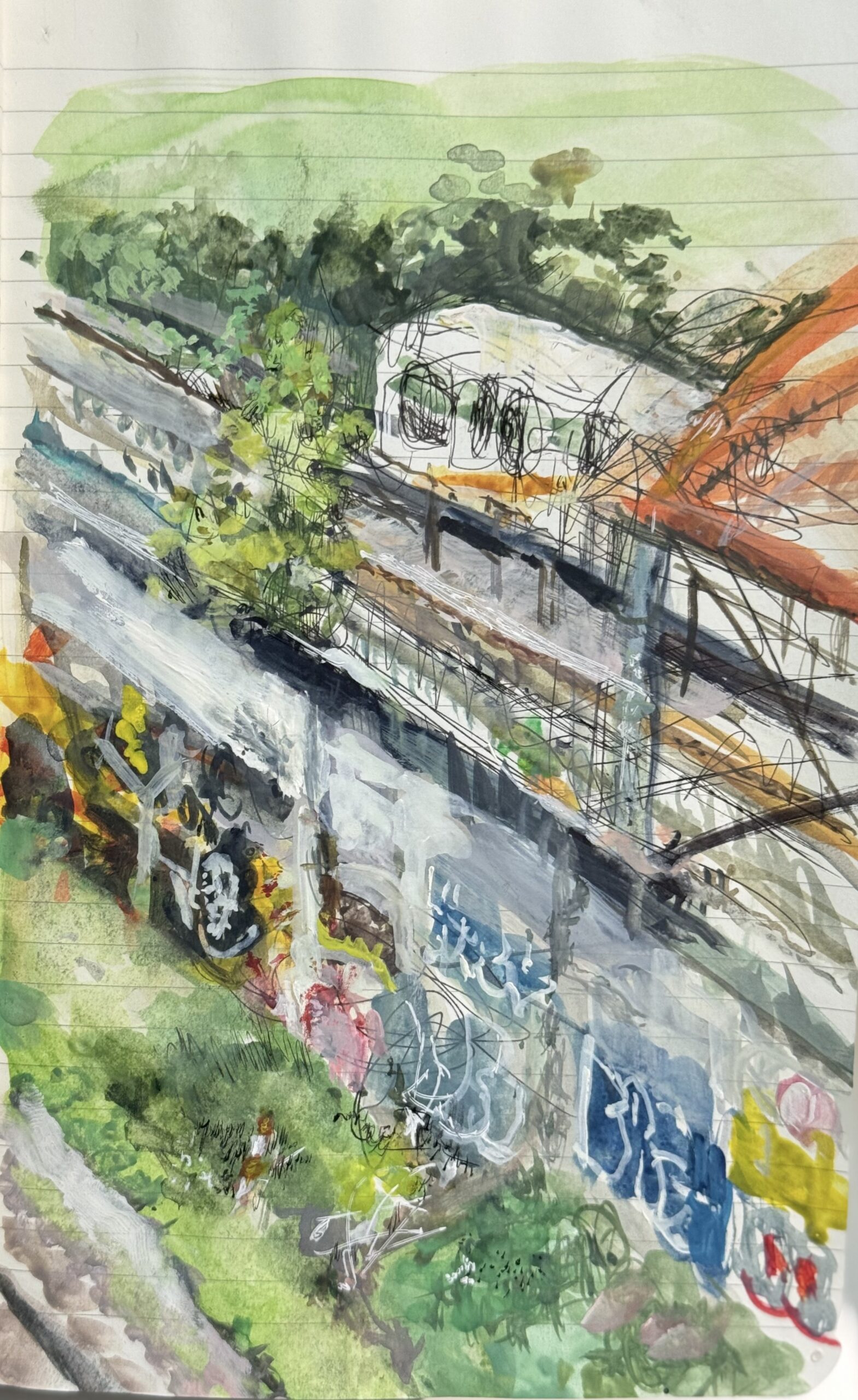
Things are more or less in place in the new studio, and I finally got back to painting this week. Opening up my box of brushes was like an emotional reunion with old friends. As it’s been several weeks since I’ve painted, I decided a low-stress way to get back into things would be to touch up some pieces I had started in January.
I’m on the third floor of a one-hundred year old building that used to be a mattress factory. It’s filled with the bustle of artists, designers, and craftspeople in an industrial neighbourhood with warehouses, other artist enclaves, and an auction house nearby.

Not too many cafés close at hand, but there’s a gelateria and a quaint neighbourhood grocery store/bakery not far away. Meanwhile I’ve inherited a toaster oven and invested in an electric kettle, so can save money and precious time by eating in most days. It’s getting very comfy–which is good for being really productive. The only downside is I may not want to go home at the end of the day!









